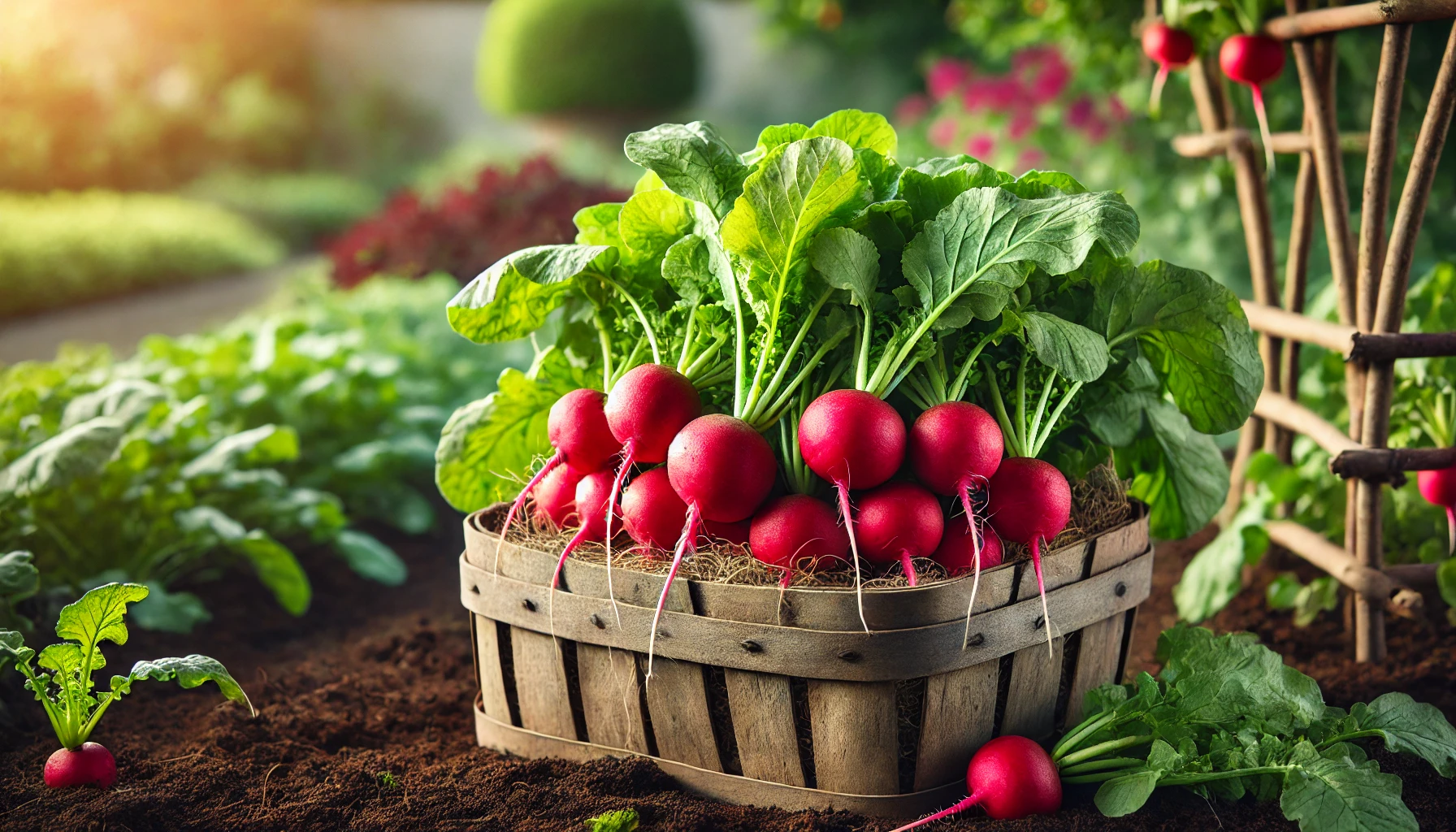The radish is a versatile root vegetable cherished for its crisp texture, peppery flavor, and impressive nutritional value. Whether enjoyed raw in salads, pickled, or cooked in a variety of dishes, this humble vegetable offers numerous benefits.
What Is a Radish?
Radish is a root vegetable belonging to the Brassicaceae family, which includes broccoli, cabbage, and mustard. Known for its vibrant red, white, or purple skin and crunchy flesh, this vegetable has been cultivated for thousands of years across the globe.
Types of Radishes
Radishes come in various shapes, sizes, and flavors.
Popular Varieties:
- Red Radish: Small, round, and spicy, commonly used in salads.
- Daikon Radish: Long and white, often featured in Asian cuisine.
- Watermelon Radish: Green on the outside and pink inside, with a mild taste.
- Black Radish: Dark-skinned with a strong, peppery flavor.
- French Breakfast Radish: Oblong and milder, ideal for fresh eating.
Nutritional Value of Radish
Radishes are low in calories yet packed with essential nutrients.
Key Nutrients in Radish:
- Rich in vitamin C, boosting immunity.
- Contains fiber for digestive health.
- Provides potassium to support heart health.
- Includes antioxidants like anthocyanins.
A 100-gram serving of radish contains approximately 16 calories, making it a guilt-free addition to your diet.
Health Benefits of Radish
The root vegetable is more than just a crunchy vegetable—it offers a wide range of health benefits.
How Radish Supports Health:
- Improves Digestion: High in fiber, it promotes gut health and prevents constipation.
- Boosts Immunity: Vitamin C enhances the body’s defense against infections.
- Aids Detoxification: Compounds in root vegetable help cleanse the liver and kidneys.
- Regulates Blood Pressure: Potassium helps maintain a healthy blood pressure level.
- Supports Weight Loss: Low-calorie and hydrating, it fits well into weight management plans.
How to Grow Radish in Your Garden
Radishes are among the easiest vegetables to grow, making them ideal for beginners.
Steps for Growing Radish:
- Choose the Right Variety: Select a type that suits your climate and preferences.
- Prepare the Soil: Ensure the soil is loose, well-draining, and slightly acidic.
- Sow Seeds: Plant seeds directly into the soil about ½ inch deep.
- Water Regularly: Keep the soil consistently moist, but avoid waterlogging.
- Harvest Promptly: Radishes mature quickly, often within 3-4 weeks.
Tip: Successive planting every few weeks ensures a continuous supply.
Cooking with Radishes
Radishes are incredibly versatile and can be prepared in various ways.
Creative Ways to Enjoy Radish:
- Raw: Add thinly sliced root vegetable to salads for a crunchy texture.
- Pickled: Ferment radishes with vinegar and spices for a tangy snack.
- Roasted: Toss radishes with olive oil and roast for a milder flavor.
- Soups and Stews: Include them in soups for a unique twist.
- Radish Greens: Use the leafy tops in smoothies, pestos, or sautéed dishes.
Common Problems in Growing Radish
Despite being easy to grow, root vegetable can face a few challenges.
Issues to Watch Out For:
- Pests: Flea beetles and root maggots can damage the plants.
- Bolting: High temperatures may cause the plant to flower prematurely.
- Poor Root Development: Compacted soil can hinder proper growth.
Interesting Facts About Radish
Radishes have a rich history and unique properties.
Fun Facts:
- Radishes were first cultivated in ancient Egypt.
- The word “radish” comes from the Latin word radix, meaning root.
- In Mexico, December 23rd is celebrated as the Night of the Radishes (Noche de Rábanos), featuring root vegetable carvings.
How to Store Radishes Properly
To keep radishes fresh, proper storage is essential.
Storage Tips:
- Refrigerate: Remove the greens and store the roots in a plastic bag.
- Use the Greens: Radish tops should be consumed within a few days.
- Pickle: Extend shelf life by pickling radishes.
Radish in Cultural Traditions
Radishes hold cultural significance in various parts of the world.
Cultural Roles:
- Japan: Daikon radish is a staple in traditional cuisine.
- India: Radish (mooli) is a key ingredient in parathas and curries.
- Europe: Black radish was historically used for medicinal purposes.
Conclusion
The root vegetable is a remarkable plant that combines health benefits, culinary versatility, and ease of cultivation. Whether you’re growing them in your garden or adding them to your favorite recipes, these root crops are a valuable addition to any lifestyle. By embracing this crunchy and nutritious vegetable, you can enjoy its many advantages while contributing to sustainable food practices.
FAQs
What makes the root vegetable spicy?
The spiciness of root vegetables comes from natural compounds called glucosinolates, which break down into mustard oils.
How long does it take to grow the root crop?
Most root vegetables are ready to harvest within 3-4 weeks, making them one of the fastest-growing vegetables.
Can you eat root vegetable greens?
Yes, the greens of this vegetable are edible and highly nutritious. They can be used in soups, salads, or sautéed as a side dish.
Are root vegetables good for weight loss?
Absolutely! These vegetables are low in calories and high in water content, making them ideal for weight management.
Do root vegetables need full sun to grow?
Yes, they thrive in full sunlight, but they can tolerate partial shade as well.
Why do root vegetables sometimes taste bitter?
Heat stress, inadequate watering, or leaving them in the ground too long can cause bitterness.



